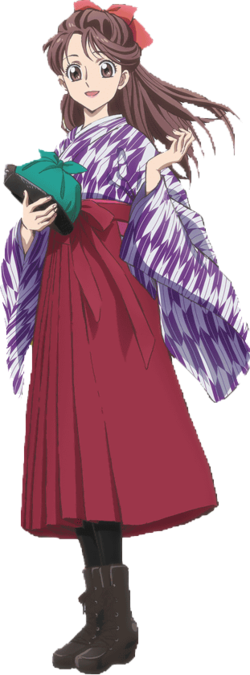Hakama

|
Moegirlpedia would welcome your assistance in improving this moe point-related article☆Kira~
Before editing this article, please read the wiki quickstart, editing guidelines and retrieve relevant information. We wish you a good time on Moegirlpedia. |
 Benio Hanamura | |
| Base Info | |
| Moe Point | Hakama (袴) |
|---|---|
| Type | Clothing |
| Symbolic Characters | Sakura Shinguji |
| Related Moe Points | Taishō maid, kimono, boots |
Hakama (Japanese:
Introduction
The traditional Japanese hakama is of Chinese origin. It can be traced back to the kù (裤), white-legged pants worn by soldiers during the Sui and Tang Dynasties. As it was introduced to Japan, it developed into the umanori hakama (馬乗り袴), which was used to facilitate horseback riding. This hakama is a male-only garment.
Since the 19th century, when Japan entered the Meiji Restoration era, European trends prevailed. Women have begun to appear more frequently in public and participate in various activities, creating a demand for more accessible outerwear. At the time, the traditional kimono could not be adapted to this need. Women began to wear umanori as a form of outdoor wear. At the time, this move was criticized by the public, considering it a violation of etiquette. After that, the Ministry of Education of the Meiji government prohibited female students from wearing umanori.
In order to accomodate the changes in reintegration to the kimono, educator Utako Shimoda[1] adapted the court kimono into a simpler hakama, borrowing from Western skirts. This type of clothing became known as the andon bakama (行灯袴), because it resembled an andon (a paper-shaded lamp). The difference between umanori-hakama and andon bakama is that umanori are divided, while the andon bakama is a cylindrical undivided hakama resembling a skirt, and it won't get in the way of the wearer's daily wide-open movement mobility.
Characters with this moe point
- Sakura Shinguji (Sakura Wars)
- Susato Mikotoba (The Great Ace Attorney Chronicles)
References